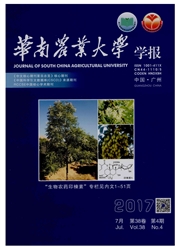

 中文摘要:
中文摘要:
采用自行设计的引物,通过PCR的方法,分别从pMD-HA5和pMD-HA9中成功扩增出AIV0025(H5N1)株和KMⅢ(H9N2)株的血凝素(hemagglutinin,HA)基因,然后分别亚克隆到pET-32a(+)、pET-28a(+)表达载体中,构建并筛选出阳性重组子,分别标记为pET32-HA5、pET28-HA9.将阳性重组质粒转化进BL21(DE3)宿主菌中,通过改变IPTG浓度和诱导时间,使重组蛋白获得表达,并确定了最佳诱导条件为IPTG终浓度1.0mmol/L、诱导时间4—5h.经SDS,PAGE和Western,blotting分析表明,重组蛋白相对分子质量约为85000和63000,主要存在于包涵体中,具有良好的免疫学活性.
 英文摘要:
英文摘要:
According to the known nucleic acid sequences of hemagglutinin(HA) genes of avian influenza virus(AIV) H5N1 and H9N2, two different pairs of primers were designed and applied to amplify the open reading frame of HA genes of AIV 0025 ( H5N1 ) and KMⅢ (H9N2) from recombinant plasmids pMD-HA5 and pMD-HA9, respectively. The PCR products were sub-cloned into prokaryotic expression plasmids pET-32a( + ) and pET-28a( + ). The positive recombinant plasmids, designated pET32-H5 and pET28-H9, were identified by PCR and digestion with restriction-endonuclease. And then the recom-binant plasmids were transformed into BL21 ( DE3 ) pLysS. The results showed that the recombinant bacteria can express recombinant proteins after inducing with IPTG. The optimized IPTG mass concentration and inducing time were confirmed as 1.0 mmol/L and 4 - 5 h, respectively. After SDS-PAGE analysis, the expression proteins from recombinant H5 and H9 gene were 85 000 and 63 000, respectively. The re-suits also suggested that the proteins were expressed as inclusion bodies in E. coli and had good immunogenicity.
 同期刊论文项目
同期刊论文项目
 同项目期刊论文
同项目期刊论文
 期刊信息
期刊信息
